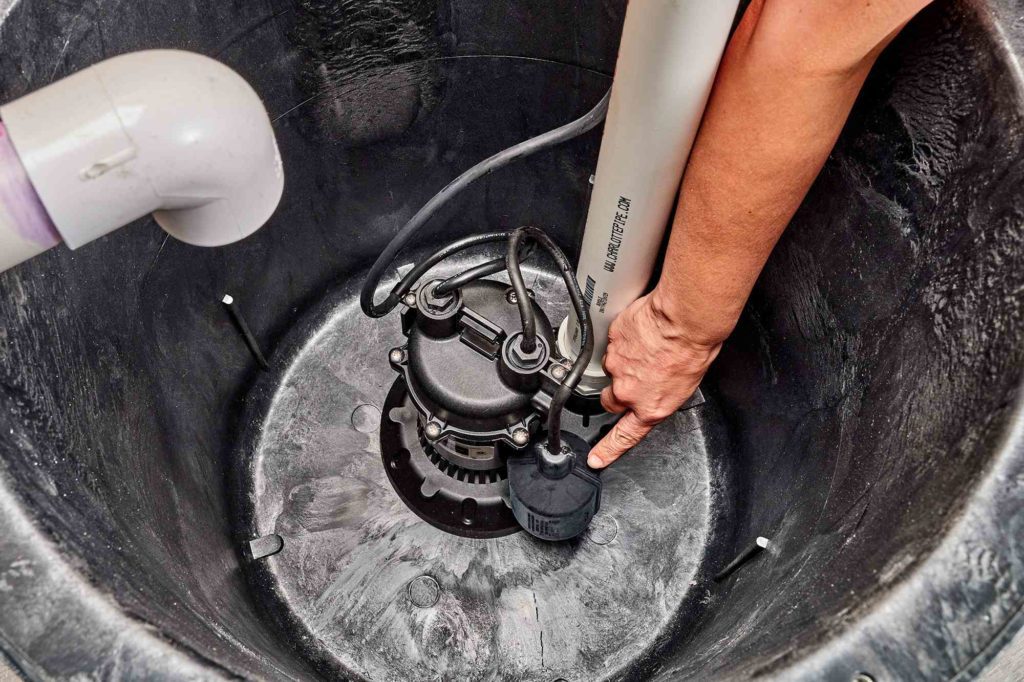The sump is a common area where liquids collect. For instance, you may have one in your vehicle for collecting oil. In the same way, many homes have a small pit dug into the ground in the basement to collect water that filters through loose soil beneath the foundation. Using a network of pipes, a sump pump detects and pumps moisture out of the sump. Sumps are typically 18 inches deep and 2 feet wide. A floating switch activates the pump when the water reaches a certain level and completes an electrical circuit. Using one-way check valves, this system prevents water from flowing back into the pit.
Inkabet: Estrategias de apuestas para maximizar tus beneficios en Perú
¿Eres un aficionado a las apuestas deportivas en Perú? Si es así, has llegado al lugar indicado. En este artículo, exploraremos las estrategias de apuestas que puedes utilizar para maximizar tus beneficios en Inkabet, uno de los principales sitios de apuestas en línea en Perú. Ya sea que estés buscando mejorar tus habilidades de apuestas o simplemente quieras aumentar tus ganancias, aquí encontrarás consejos y trucos que te ayudarán a tomar decisiones más informadas al apostar en tus deportes favoritos.
Desde fútbol hasta tenis, pasando por básquetbol y mucho más, Inkabet ofrece una amplia variedad de opciones de apuestas deportivas. En este artículo, exploraremos cómo aprovechar al máximo estas oportunidades y te daremos herramientas prácticas para que puedas tomar decisiones acertadas al realizar tus apuestas. Descubriremos estrategias para gestionar tu bankroll, analizar estadísticas clave y evaluar las cuotas de manera efectiva. ¡Prepárate para llevar tus habilidades de apuestas al siguiente nivel y aumentar tus ganancias en Inkabet!
Conoce las reglas del juego: Un paso fundamental para maximizar tus beneficios en las apuestas de Inkabet en Perú.
¿Eres un amante de las apuestas deportivas en Perú? Entonces, no puedes dejar de conocer Inkabet, la plataforma líder en el país que te ofrece estrategias para maximizar tus beneficios. En Inkabet, encontrarás una amplia variedad de deportes y eventos en los que puedes apostar, desde fútbol y baloncesto hasta tenis y carreras de caballos. Además, cuentan con una interfaz intuitiva y fácil de usar, que te permitirá realizar tus apuestas de forma rápida y segura.
Para empezar a disfrutar de todas las ventajas que ofrece Inkabet, simplemente regístrate en su página web: https://inkabetonline.com/registro/. Una vez que hayas creado tu cuenta, podrás acceder a promociones exclusivas, bonos de bienvenida y otras ofertas especiales. Además, Inkabet cuenta con un servicio de atención al cliente disponible las 24 horas del día, los 7 días de la semana, para resolver cualquier duda o consulta que puedas tener. No pierdas más tiempo y únete a la emoción de las apuestas en Inkabet.
Analiza las estadísticas y tendencias: Cómo utilizar la información disponible para tomar decisiones más acertadas en tus apuestas en Inkabet.
Inkabet es una reconocida casa de apuestas en Perú que ofrece una amplia gama de opciones para maximizar tus beneficios. Con estrategias adecuadas, podrás sacar el máximo provecho de tus apuestas y aumentar tus ganancias. En este artículo, te presentaremos algunas estrategias clave que puedes seguir para optimizar tus apuestas en Inkabet.
En primer lugar, es importante investigar y analizar los equipos y eventos en los que deseas apostar. Conocer el rendimiento de los equipos, su historial de resultados y las estadísticas relevantes te ayudará a tomar decisiones informadas. Además, estar al tanto de las noticias y novedades en el mundo deportivo te dará una ventaja al momento de realizar tus apuestas.
Otra estrategia efectiva es diversificar tus apuestas. En lugar de apostar todo tu dinero en un solo evento, considera repartir tus apuestas en diferentes eventos y mercados. Esto te brindará más oportunidades de ganar y reducirá el riesgo de perder todo tu capital en una sola apuesta. Además, aprovecha las promociones y bonos que Inkabet ofrece para maximizar tus beneficios.
Finalmente, es fundamental establecer un presupuesto y cumplirlo. Antes de realizar cualquier apuesta, define la cantidad de dinero que estás dispuesto a invertir y no te excedas de ese límite. El juego responsable es clave para evitar pérdidas significativas. Recuerda que las apuestas deportivas son una forma de entretenimiento, por lo que debes disfrutar del proceso y no apostar más de lo que puedes permitirte perder.
Gestión adecuada del bankroll: Aprende a administrar tu dinero de forma inteligente para aumentar tus ganancias en Inkabet.
Inkabet es una reconocida casa de apuestas en Perú que ofrece a los apostadores una amplia gama de oportunidades para maximizar sus beneficios. Con una sólida reputación en el mercado peruano, Inkabet se ha convertido en una opción popular para aquellos que buscan una experiencia de apuestas emocionante y rentable.
Una de las estrategias clave para maximizar tus beneficios en Inkabet es aprovechar al máximo las promociones y bonificaciones que ofrecen. La casa de apuestas suele ofrecer bonos de bienvenida para nuevos usuarios, así como promociones especiales para eventos deportivos importantes. Estas ofertas pueden aumentar significativamente tus ganancias y brindarte una ventaja adicional al realizar tus apuestas.
Otra estrategia efectiva es realizar un análisis exhaustivo de los eventos deportivos antes de realizar tus apuestas. Inkabet ofrece una amplia variedad de deportes y mercados para apostar, lo que te brinda la oportunidad de estudiar detenidamente las estadísticas, tendencias y noticias relevantes antes de tomar una decisión informada. Al investigar y analizar cuidadosamente los eventos, puedes aumentar tus posibilidades de éxito y maximizar tus beneficios.
Por último, es importante establecer un presupuesto y gestionar tus apuestas de manera responsable. Inkabet ofrece herramientas de control de juego que te permiten establecer límites de depósito, apuesta y pérdida para garantizar una experiencia de juego segura y responsable. Al establecer límites claros y seguir una estrategia de gestión de dinero inteligente, puedes minimizar los riesgos y maximizar tus beneficios a largo plazo en Inkabet.
Apuestas en vivo: Estrategias para sacar provecho de las emocionantes apuestas en tiempo real en Inkabet.
Inkabet es una reconocida casa de apuestas en Perú que ofrece a sus usuarios una amplia variedad de estrategias para maximizar sus beneficios. Con una interfaz intuitiva y amigable, esta plataforma permite a los jugadores realizar apuestas en diversos eventos deportivos, desde fútbol y tenis hasta voleibol y baloncesto.
Una de las estrategias más efectivas que ofrece Inkabet es la posibilidad de realizar apuestas en directo. Esto significa que los jugadores pueden realizar sus apuestas mientras el evento deportivo se está llevando a cabo. Esta modalidad permite aprovechar las fluctuaciones en las cuotas y tomar decisiones más acertadas en tiempo real, aumentando así las posibilidades de obtener ganancias.
Otra estrategia interesante es la opción de combinar apuestas en un solo boleto. Inkabet permite a sus usuarios crear apuestas combinadas, en las cuales se pueden incluir múltiples eventos deportivos. De esta manera, los jugadores pueden aumentar sus ganancias potenciales al acertar en varios pronósticos a la vez.
Además, Inkabet ofrece una amplia gama de bonificaciones y promociones para sus usuarios. Desde bonos de bienvenida hasta apuestas gratuitas, esta casa de apuestas busca constantemente recompensar a sus jugadores más fieles. Estas bonificaciones permiten a los jugadores aumentar su bankroll y tener más oportunidades de obtener beneficios.
Aprovecha las promociones y bonos: Cómo sacar el máximo provecho de las ofertas y promociones de Inkabet para aumentar tus beneficios.
Inkabet es una reconocida casa de apuestas en Perú que ofrece una amplia gama de opciones para maximizar tus beneficios. Con su plataforma intuitiva y amigable, podrás realizar apuestas deportivas en diversos eventos como fútbol, tenis, baloncesto y muchos más. Además, Inkabet también cuenta con una sección de casino en línea, donde podrás disfrutar de emocionantes juegos de mesa, tragamonedas y póker.
Una de las estrategias clave para maximizar tus beneficios en Inkabet es realizar un análisis exhaustivo de los eventos deportivos antes de realizar tus apuestas. Esto implica estudiar las estadísticas de los equipos o jugadores, analizar su rendimiento reciente y considerar otros factores como lesiones o suspensiones. Al tomar decisiones informadas, aumentarás tus posibilidades de acertar y obtener ganancias.
Otra estrategia efectiva es aprovechar las promociones y bonos que ofrece Inkabet. La casa de apuestas constantemente ofrece incentivos para sus usuarios, como bonos de bienvenida, apuestas gratis o promociones especiales para eventos destacados. Estas promociones te permitirán aumentar tus ganancias o incluso realizar apuestas sin riesgo, lo que resulta en una excelente oportunidad para maximizar tus beneficios.
Por último, es importante establecer un presupuesto y gestionar adecuadamente tu dinero al realizar apuestas en Inkabet. Esto implica establecer límites de apuestas y no excederlos, así como no dejarte llevar por la emoción del momento. Al tener un enfoque disciplinado y responsable, podrás maximizar tus beneficios a largo plazo y disfrutar de una experiencia de apuestas positiva en Inkabet.
En conclusión, Inkabet ofrece una variedad de estrategias de apuestas que te ayudarán a maximizar tus beneficios en Perú. Desde la gestión adecuada del bankroll hasta la elección de las mejores cuotas, estas estrategias te brindarán las herramientas necesarias para aumentar tus ganancias. Además, la plataforma de Inkabet es fácil de usar y cuenta con una amplia oferta de eventos deportivos y juegos de casino. No pierdas la oportunidad de aprovechar al máximo tus apuestas con Inkabet y comienza a ganar hoy mismo.
Get a free quote from Eco pro plumbing today by visiting their website. They offer the best quality repair and service for plumbing and mechanical systems with over two generations of experience. They aim to provide a range of high-quality plumbing services at a fair price. Eco pro plumbing also offers the best sump pump installation in Cambridge.
A guide to repair your sump pump
People tend to put off various household maintenance, but putting off your sump pump repair is not the best choice. If you want to avoid flooding in your basement or office while also saving time and money, we strongly advise you to read our post and address the problem as soon as possible. This blog will go over some fundamental troubleshooting techniques in case your sump pump fails.
- Examine the Float
A sump pump’s float is an essential component, but it’s also one of the most fragile. The float rises as the water level in the sump pit rises, signalling the pump to begin pumping water out of the pit. Pour some water into the pit slowly to check the float. You’re in luck if the float rises with the water and the pump activates when the water is removed. You should repeat this test every few months.
- Clean the Sump Pit
Sump pit debris is a significant cause of float problems. Cleaning the sump pit is essential for sump pump maintenance, even if your pump is working correctly. Ensure no loose debris is left in the pit.
- Examine the Check Valve
You probably need to replace the check valve if you pour water into the sump pit, and it doesn’t trigger the pump to remove the water.
- Consider cleaning the impeller.
Sump pump repair and maintenance necessitates keeping debris out of the sump pit. However, debris can sometimes get past the sump pump’s screen and clog the impeller. To determine if this is the issue, unplug the pump, disconnect it from the piping, and remove it from the pit. To get to the screen and impeller, disassemble the pump. Then start removing any debris that is there in the sump pump, and afterwards reassemble it.
- Make sure the power is on.
Check the electrical connections if the sump pump does not appear to be working. Ensure the pump is plugged in properly, and check the circuit breaker. If your pump is linked to one, pay specific attention to the ground fault circuit interrupter, as they tend to trip. Reset the GFCI by pressing the reset button. If the electrical supply appears to be adequate, your pump is likely needs a replacement.
- Motor overheats
Your sump pump will produce a significant amount of heat. Your system will survive longer if the heat is easily dispersing. If you can submerge your sump pump system in the water around it, it will cool down and release the surplus heat. It’s also crucial to have the proper pit size surrounding your sump pump. Your pump will remove more water than necessary if your hole is too huge and deep. If the pit is relatively small, on the other hand, your pump will have to turn on and off more frequently, wearing it out sooner. You will have to replace the motor if it overheats since it would burn out.





